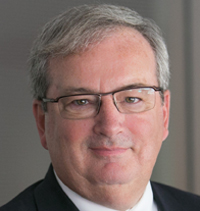As the anniversary of another terrorist attack approaches, the questions remain: Are we safer than we were before the attacks, and are we doing the right things to prevent another attack? Those were the questions on the minds of participants this past week in Mumbai, India, at the second Security and Resiliency Summit co-sponsored by London First and Bombay First – held on the cusp of the first anniversary of the Mumbai attacks of November 26, 2008.
Mumbai is an amazingly resilient city. When I visited here in January, some six weeks after the terrorists had done their evil deeds, the hotels where the attacks occurred had completely refurbished the areas that had been raked with gunfire and soaked in blood. Then security was very visible, although by most Western standards vulnerabilities were still apparent. The business community was in shock, but not in a state of denial, because the “26-11” (as it is called) atrocities were an attack on “new” India – the vital businesses that were a symbol of modernization and 21st century cultural acceptance. These were not like the previous attacks in slum villages or poor-people’s crowded trains. This attack was different, and that difference was evident in their words at the time. Business and government leaders were eager to know what they could learn from U.S. and London officials about the right and wrong way to respond.
Now, almost one year after those attacks, the tension in the city of Mumbai has relaxed. Security is still visible, new law-enforcement equipment has been acquired and government officials are being remarkably candid about what they need to improve in order to prevent another attack – and everyone acknowledges they have a long way to go. The visible symbols of the attack have been erased, but the conditions that allowed it to occur have not – and that was on the mind of Summit attendees.
This sentiment was best summed up by Police Commissioner D. Sivanandan when he said that, “Like the 9-11 Commission in the U.S. said in its report, in Mumbai our ‘lack of imagination’ led us to have a lack of preparation.”
Those words still ring in my ears. When I repeated them back to him during a private conference, Commissioner Sivanandan was even more forthcoming. “Our highest priority need is training.” Without proper training, all the technology in the world will not help public officials prevent, adequately respond and quickly recover from a terrorist event. “We were not prepared; we were not trained; we must do a better job of responding when the next event occurs – and we all know that it will occur, just not when or where and it may not be the same type of attack that we have experienced,” he said.
Director General of Maharashtra Police, Mr. A.N. Roy, was also remarkably candid in his conference remarks – more so than almost any police official I’ve ever heard in the U.S. Mr. Roy talked about the need for global assistance and how incidents that happen in Mumbai are influenced and affected by events across the world. He talked about the need to share intelligence information and how cooperative U.S. and U.K. officials had been in coming to Mumbai’s aid. He also said that the lessons they have learned from 26-11 were painful but necessary for law enforcement officials to do a better job for the citizens they are sworn to protect.
Former DHS Secretary Michael Chertoff was a key note speaker and his unique perspective on the U.S. response to the 9-11 attacks, including the creation of DHS and an explanation of its mission, brought context to the Summit that few others could have provided. Remarks by his colleague, Chad Sweet, highlighted the multiple opportunities India had to get greater public participation in individual preparation, including the potential use of “Bollywood” and sports figures to deliver preparedness messages. The use of “soft power” is often misunderstood but is critical to building a cultural climate that is antithetical to terrorist’s radical messages.
Another panel leader, Emily Walker, a former Member of the 9-11 Commission and the DHS Homeland Security Advisory Council, led a discussion on private sector preparedness in the financial community which emphasized the need for standards of preparedness that can be exercised and audited. Her panel was especially well received by the Mumbai business community. The panel where I was privileged to speak dealt with the corporate response to terrorism, and I spoke on the impact of the increasing use of “social media” outlets to communicate around the traditional media outlets.
Secretary Chertoff and Sir David Veness, former UN Undersecretary General for Safety and Security (and head of London First), together with conference organizer and Bombay First Chairman, Narinder Nayar, summed up the conference by providing a list of action items that need to be completed, including establishing a public private partnership that takes advantage of the awareness skills of private security guards – something that has been very successful in London under the rubric of “Project Griffin.”
Mumbai is a most resilient city. It is a city of contrasts in almost every respect that word can be applied to a sliver of land jutting in to the Arabain Sea which contains over 15 million people. Riches and poverty abide within feet of each other. Outdoor laundries sit next to train stations, both in the shadows of modern high-rise buildings. It is a City of Dreams, as the Security and Resilience conference program affirmed. How to secure that city – indeed, every city in every country across the globe – is a question that will challenge the greatest minds and continually test the political will of elected and appointed officials. Yet it must be done. After several days in Mumbai, with new friends who are affected by old, serious problems, my commitment to help has been renewed.
-
Zev Schonberg


